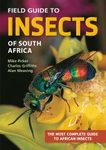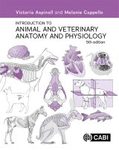About this book
In an age of unprecedented human impact on the environment, insect conservation biology is of increasing importance. Due to their abundance, diversity and rapid response to environmental changes, insects are also valuable indicators of wider biodiversity, and make excellent models for conservation research and monitoring. Over 50 international experts have contributed to this authoritative and up-to-date compendium, covering many topics including climate change, habitat management, ecosystem processes, conservation genetics, impact of GM technology, and the integration of insects into wider conservation agendas.
Contents
Insect Conservation in Temperate Biomes: Issues, Progress and Prospects, A J A Stewart and T R New; Insect Conservation in Tropical Areas, O T Lewis and T Basset, Smithsonian Tropical Research Institute, Panama; The Conservation Value of Insect Breeding Programs: Rationale, Evaluation Tools and Example Programme Case Studies, P Pearce-Kelly, Zoological Society of London, UK; R Morgan, Cincinnati Zoo and Botanical Garden, USA; P Honan, Melbourne Zoological Board of Australia; P Barrett, Butterfly Creek, New Zealand; L Perrotti, Roger Williams Park Zoo, USA; M Magdich, The Toledo Zoo, USA; B A Daniel, Zoo Outreach Organization, India; E Sullivan, Wood and Park Zoological Gardens, USA; K Veltman, Natura Artis Magistra, Netherlands; D Clarke and T Moxey, both Zoological Society of London, UK; W Spencer, Clifton and West of England Zoological Society, UK; What Have Red Lists Done for Us? The Values and Limitations of Protected Species Listing for Invertebrates, M S Warren; N Bourn; T Brereton; R Fox; I Middlebrooke; M S Parsons, all from Butterfly Conservation, UK; Species Conservation and Landscape Management: A Habitat Perspective, R L H Dennis, NERC Centre for Ecology and Hydrology and Staffordshire University, UK; T G Shreeve, Oxford Brookes University, UK and D A Shepperd, Nature, UK; Implementing Ecological Networks for Conserving Insect and Other Biodiversity, M J Samways, University of Stellenbosch, South Africa; Insects and Bioindication: Theory and Progress, M A McGeoch, University of Stellenbosch, South Africa. Insect Populations in Fragmented Habitats, I Hanski, University of Helsinki, Finland, and J Poyry, Finnish Environment Institute; Monitoring Biodiversity: Measuring Long-term Changes in Insect Abundance, R Fox; K F Conrad and I P Woiwod, both Rothamsted Research, UK; The Conservation of Ecological Interactions, J Memmott; R Gibson; L G Carvalheiro; K Henson; R H Heleno; M L Mikel; S Pearce, all from University of Bristol, UK; Insects and Climate Change: Processes, Patterns and Implications for Conservation, R J Wilson, Univers dad Rey Juan Carlos, Spain; Z G Davies, University of Birmingham, UK; C D Thomas, University of York, UK; Conservation Genetics for Insects, D J Thompson; P C Watts; I J Saccheri, all University of Liverpool, UK; Broadening Benefits to Insects from Wider Conservation Agendas, T R New; The Extinction of Experience - A Threat to Insect Conservation? O D Cheesman; Insects as Providers of Ecosystem Services: Crop Pollination and Pest Control, C Kreman, University of California, USA; D Kleijn, Nature Conservation and Plant Ecology Group, Netherlands; Insect Conservation in Agricultural Landscapes, T Tscharntke, J M Tylianakis both University of Gottingen, Germany; M R Wade and S D Wratten, Lincoln University, UK; J Bengtsson, Swedish University of Agricultural Sciences, and D Kleijn; Genetically Modified Crops and Insect Conservation, I P Woiwood and T H Shuler, Rothamsted Research, UK; Insect Conservation: Progress and Prospects, O T Lewis, T R New and A J A Stewart.
Customer Reviews




































